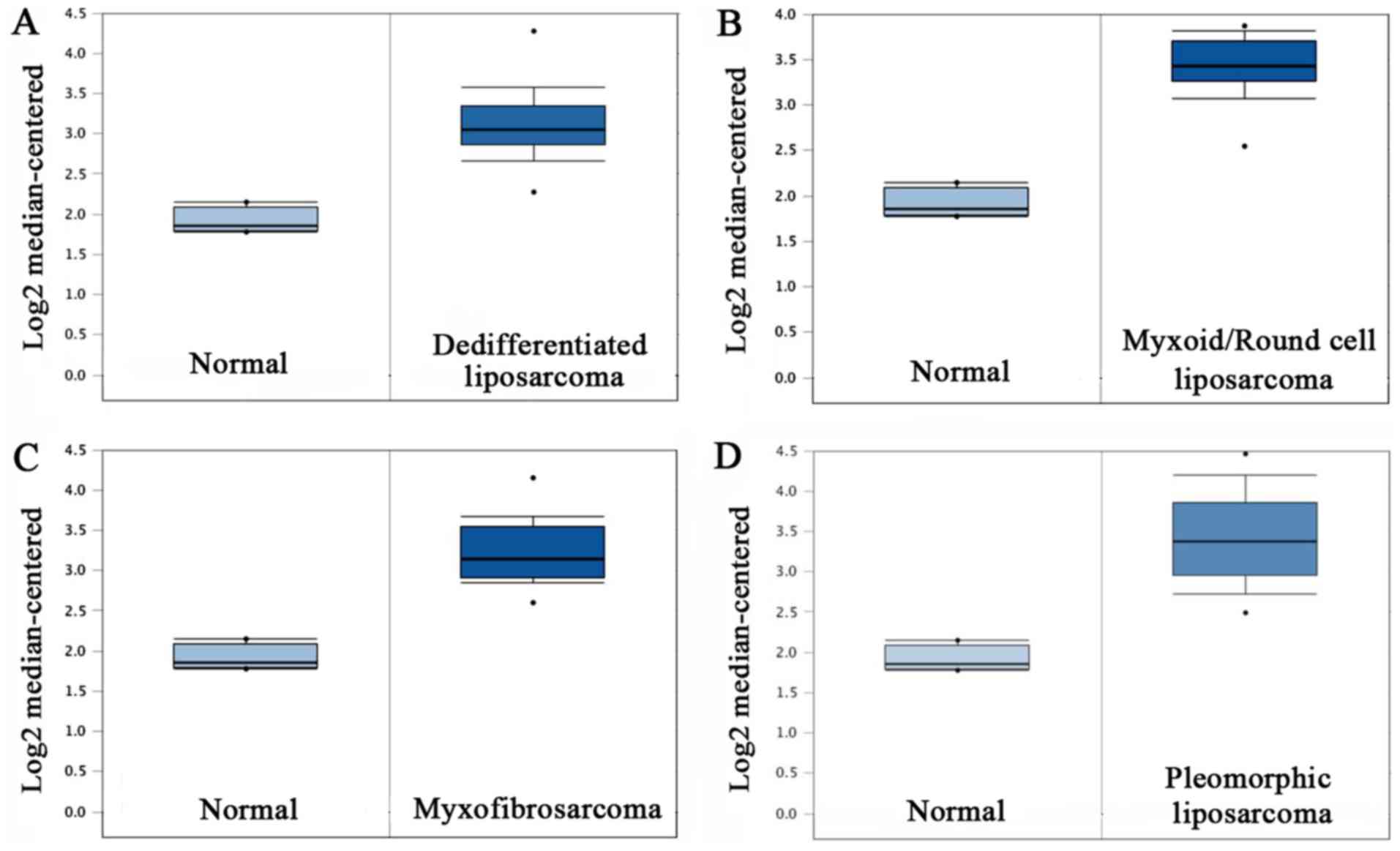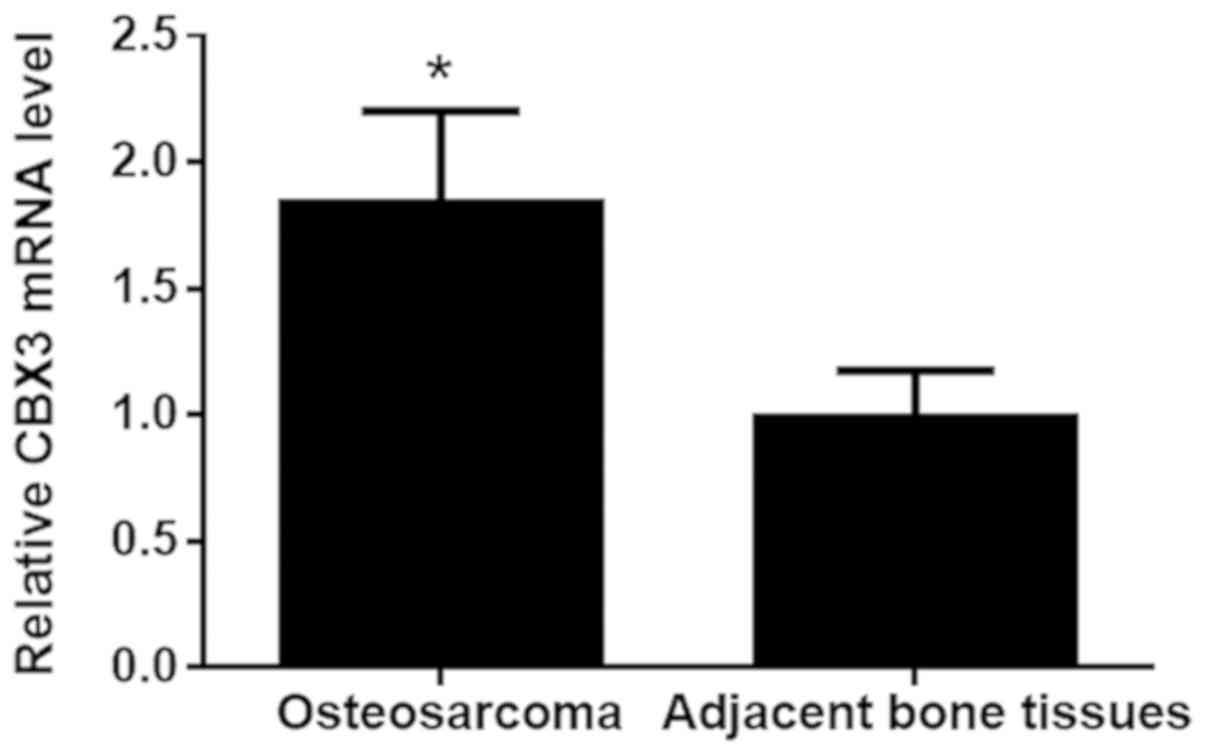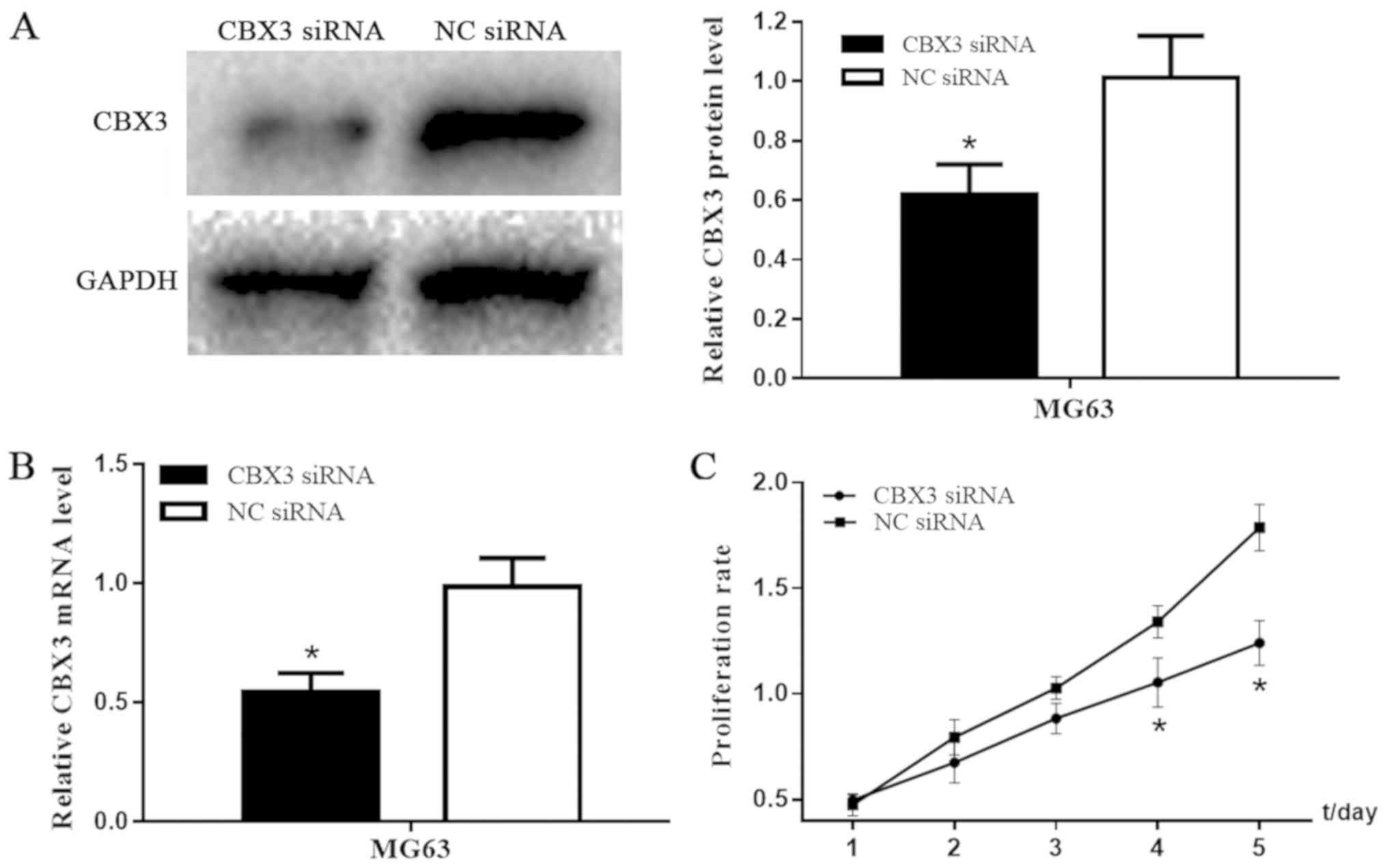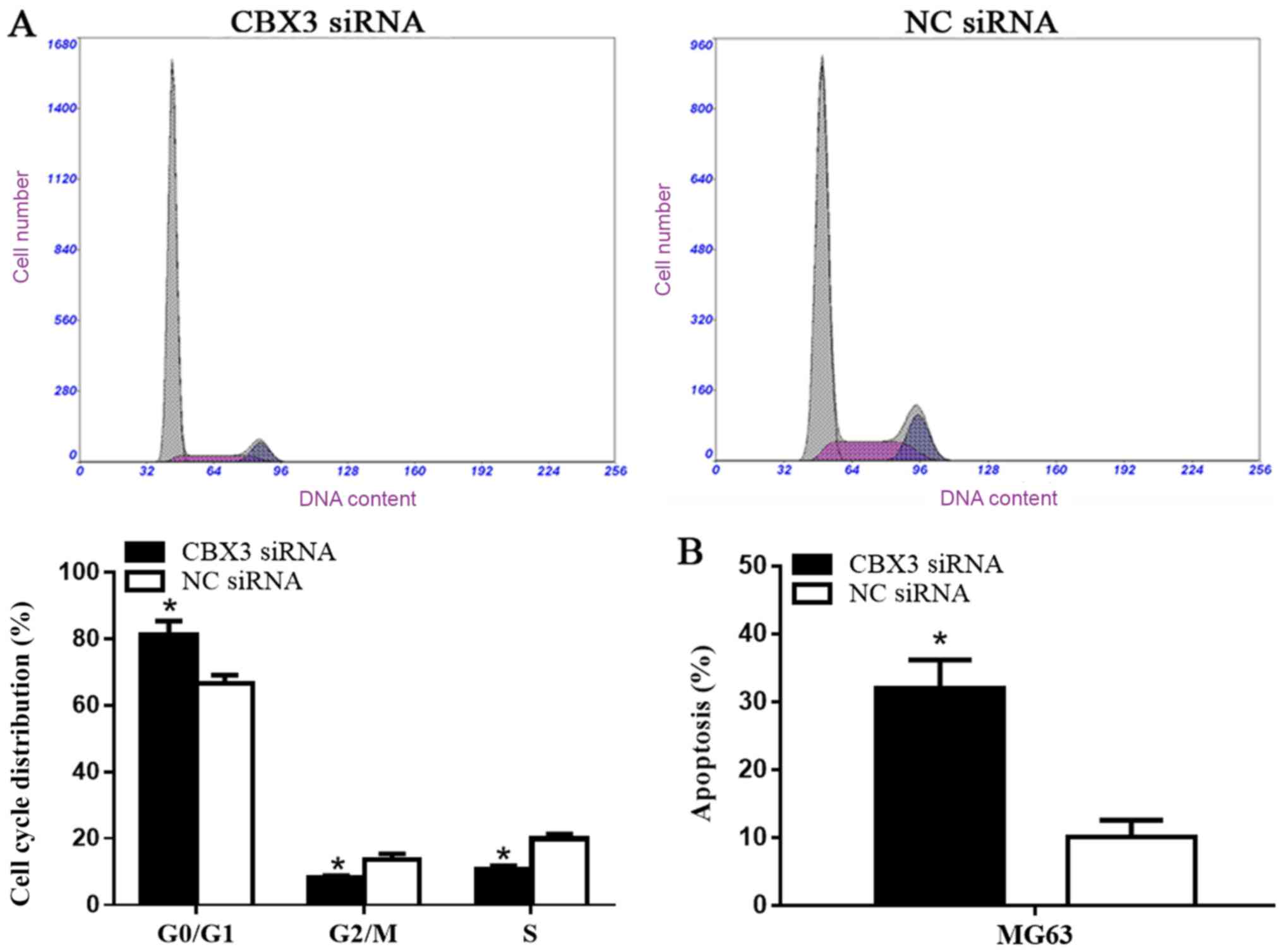
CBX3 predicts an unfavorable prognosis and promotes tumorigenesis in osteosarcoma
- Authors:
- Chao Ma
- Xing‑Guo Nie
- Yan‑Li Wang
- Xiang‑Hua Liu
- Xue Liang
- Qing‑Lan Zhou
- Da‑Peng Wu
View Affiliations
Affiliations: Department of Orthopedics, The First Affiliated Hospital of Xinxiang Medical University, Xinxiang, Henan 453000, P.R. China, Department of Operating Theatre, The First Affiliated Hospital of Xinxiang Medical University, Xinxiang, Henan 453000, P.R. China, Department of Central Sterile Supply, The First Affiliated Hospital of Xinxiang Medical University, Xinxiang, Henan 453000, P.R. China
- Published online on: March 28, 2019 https://doi.org/10.3892/mmr.2019.10104
-
Pages:
4205-4212
-
Copyright: © Ma
et al. This is an open access article distributed under the
terms of Creative
Commons Attribution License.
Metrics: Total
Views: 0 (Spandidos Publications: | PMC Statistics: )
Metrics: Total PDF Downloads: 0 (Spandidos Publications: | PMC Statistics: )
This article is mentioned in:
Abstract
CBX3, namely chromobox protein homolog 3, a member of the heterochomatin protein 1 (HP1) family, has been shown to be associated with the tumorigenesis of various types of cancer. The aim of the present study was to assess the biological role and the clinicopathological importance of CBX3 in osteosarcoma. The Oncomine database was utilized to determine the CBX3 expression in sarcoma patients. A retrospective cohort study was conducted to evaluate the prognostic value of CBX3 expression. In addition, correlations between the clinicopathological features of the osteosarcoma patients and CBX3 expression were assessed and involved recurrence, distant metastasis, lymph node metastasis, response to chemotherapy, pathological differentiation, clinical stage, anatomic location, tumor size and age. To investigate the function of CBX3 in osteosarcoma, a small interfering RNA for CBX3 was designed and this was used for the transfection of osteosarcoma MG63 cells. Then, the effects of CBX3 on proliferation, cell cycle distribution and apoptosis of osteosarcoma cells were investigated via CCK‑8 assay and cell cycle assay and cell apoptosis analysis, respectively. Based on our findings, upregulation of CBX3 expression was noted both in osteosarcoma and also other sarcoma types, which included pleomorphic liposarcoma, myxofibrosarcoma, myxoid/round cell liposarcoma and dedifferentiated liposarcoma. In addition, based on the retrospective cohort study, CBX3 expression was associated with the disease‑free survival (DFS) and overall survival (OS) of the osteosarcoma patients and a large tumor size, high distant metastasis rate and high clinical stage rate. In addition, the proliferation ability was blocked by the knockdown of CBX3 through the application of CBX3 siRNA, and CBX3 knockdown also led to increased apoptosis and cell cycle arrest at G0 and G1 phases in osteosarcoma cells. CBX3 is highly expressed in human osteosarcoma tissues. Meanwhile, high CBX3 is a predictor of the poor prognosis of osteosarcoma patients. To conclude, the growth of osteosarcoma can be promoted by CBX3, which may be used as an independent potential prognostic biomarker for patients suffering from osteosarcoma.
View References
|
1
|
Zhang GY, Zhang JF, Hu XM, Luo ZP and Ma
YZ: Clinical significance of long non-coding RNA EWSAT1 as a novel
prognostic biomarker in osteosarcoma. Eur Rev Med Pharmacol Sci.
21:5337–5341. 2017.PubMed/NCBI
|
|
2
|
Fan J, Mei J, Zhang MZ, Yuan F, Li SZ, Yu
GR, Chen LH, Tang Q and Xian CJ: Clinicopathological significance
of glucose transporter protein-1 overexpression in human
osteosarcoma. Oncol Lett. 14:2439–2445. 2017. View Article : Google Scholar : PubMed/NCBI
|
|
3
|
Yoshida A, Fujiwara T, Uotani K, Morita T,
Kiyono M, Yokoo S, Hasei J, Nakata E, Kunisada T and Ozaki T:
Clinical and functional significance of intracellular and
extracellular microRNA-25-3p in osteosarcoma. Acta Med Okayama.
72:165–174. 2018.PubMed/NCBI
|
|
4
|
Longhi A, Errani C, De Paolis M, Mercuri M
and Bacci G: Primary bone osteosarcoma in the pediatric age: State
of the art. Cancer Treat Rev. 32:423–436. 2006. View Article : Google Scholar : PubMed/NCBI
|
|
5
|
Chou AJ, Geller DS and Gorlick R: Therapy
for osteosarcoma: Where do we go from here? Paediatr Drugs.
10:315–327. 2008. View Article : Google Scholar : PubMed/NCBI
|
|
6
|
Fan Y, Li H, Liang X and Xiang Z: CBX3
promotes colon cancer cell proliferation by CDK6 kinase-independent
function during cell cycle. Oncotarget. 8:19934–19946.
2017.PubMed/NCBI
|
|
7
|
Canzio D, Larson A and Narlikar GJ:
Mechanisms of functional promiscuity by HP1 proteins. Trends Cell
Biol. 24:377–386. 2014. View Article : Google Scholar : PubMed/NCBI
|
|
8
|
Esteller M: Cancer epigenomics: DNA
methylomes and histone-modification maps. Nat Rev Genet. 8:286–298.
2007. View
Article : Google Scholar : PubMed/NCBI
|
|
9
|
Chen LY, Cheng CS, Qu C, Wang P, Chen H,
Meng ZQ and Chen Z: CBX3 promotes proliferation and regulates
glycolysis via suppressing FBP1 in pancreatic cancer. Biochem
Biophys Res Commun. 500:691–697. 2018. View Article : Google Scholar : PubMed/NCBI
|
|
10
|
Livak KJ and Schmittgen TD: Analysis of
relative gene expression data using real-time quantitative PCR and
the 2(-Delta Delta C(T)) method. Methods. 25:402–408. 2001.
View Article : Google Scholar : PubMed/NCBI
|
|
11
|
Dialynas GK, Vitalini MW and Wallrath LL:
Linking heterochromatin protein 1 (HP1) to cancer progression.
Mutat Res. 647:13–20. 2008. View Article : Google Scholar : PubMed/NCBI
|
|
12
|
Zhang H, Chen W, Fu X, Su X and Yang A:
CBX3 promotes tumor proliferation by regulating G1/S phase via p21
downregulation and associates with poor prognosis in tongue
squamous cell carcinoma. Gene. 654:49–56. 2018. View Article : Google Scholar : PubMed/NCBI
|
|
13
|
Chang SC, Lai YC, Chen YC, Wang NK, Wang
WS and Lai JI: CBX3/heterochromatin protein 1 gamma is
significantly upregulated in patients with non-small cell lung
cancer. Asia Pac J Clin Oncol. Nov 10–2017.(Epub ahead of print).
doi: 10.1111/ajco.12820.
|
|
14
|
Slezak J, Truong M, Huang W and Jarrard D:
HP1γ expression is elevated in prostate cancer and is superior to
Gleason score as a predictor of biochemical recurrence after
radical prostatectomy. BMC Cancer. 13:1482013. View Article : Google Scholar : PubMed/NCBI
|














